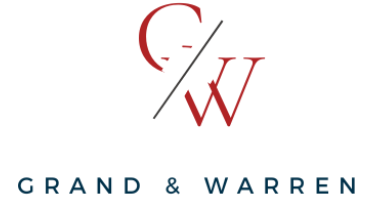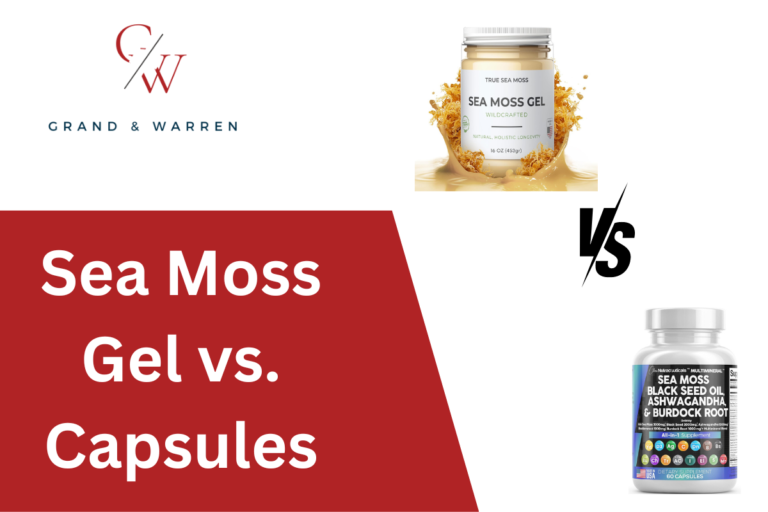Beard Oil Vs Balm: Choosing the Right Product for Your Beard Care Routine
Beard oil vs. balm – which should you choose and when?
When it comes to grooming a beard, the use of beard oil and balm has become essential for maintaining a healthy, well-groomed appearance. You just have to know which to use and when to grow and maintain a healthy and full beard.
The short answer:
- Beard oil typically a blend of natural carrier and essential oils, is primarily designed to mimic the natural oils produced by the skin, moisturizing both the beard and the skin underneath. It’s particularly beneficial for keeping the beard soft, shiny, and smooth, but doesn’t provide much hold or use for styling
- Beard balm acts as a leave-in conditioner that not only moisturizes but also provides a hold for styling purposes. Its consistency is thicker than oil due to the addition of butters and beeswax, which helps to tame flyaways and shape the beard.

Knowing when and how to use beard oil and beard balm can make all the difference in a beard care routine. Below we walk through key differences between beard balm and oil, how to use them to promote beard growth and a thicker consistency, which to use to tame unruly beard hairs, and how to stop beard itch.
Beard Balm vs. Oil: Key Difference Between Beard Products
- Beard oil is designed for moisturizing and softening the beard, promoting a smooth, shiny appearance.
- Beard balm conditions and provides hold for styling, helping to manage and shape the beard.
- Understanding the specific benefits of each can optimize a beard grooming routine.
Understanding Beard Oil
Beard oil offers a number of benefits for your beard’s health.
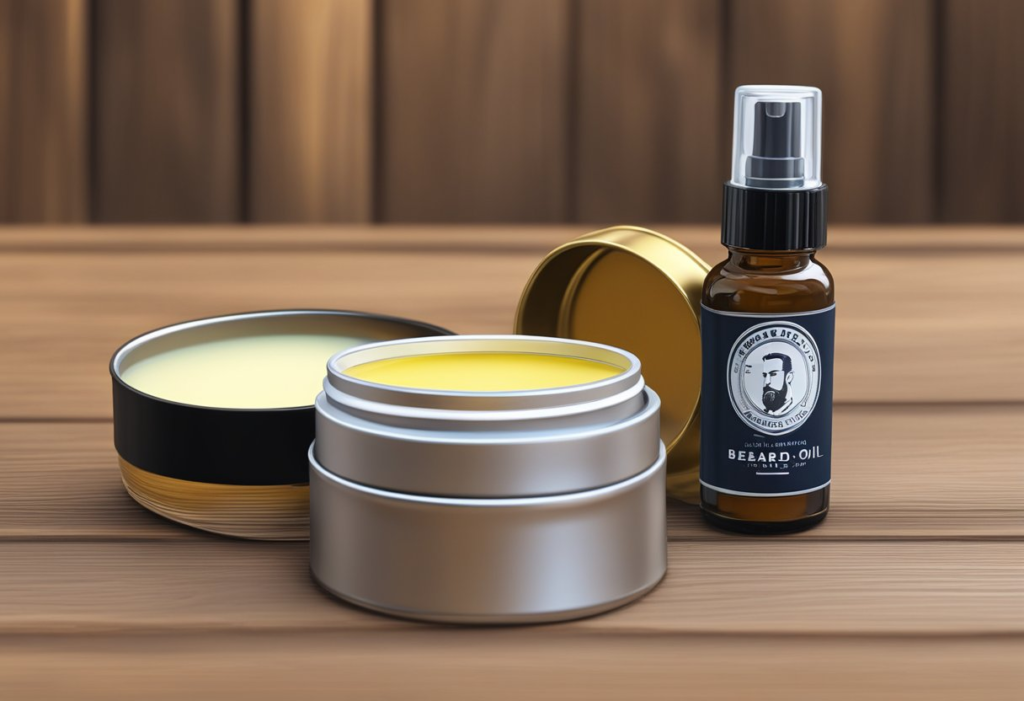
Purpose of Beard Oil
Beard oil serves as a conditioning agent for beards, providing moisturization to both the hair and the underlying skin. Because it helps maintain the health of the skin underneath your facial hair, it is key to reduce beard itch, particularly if you have a long beard. Since it provides more hydration to the skin and hair folices, its nourishing ingredients penetrate deeper and help soften the beard. Beard oil helps in maintaining the health of your facial hair, keeping it soft, shiny, and smooth.
Key Ingredients of Beard Oil
Carrier oils like jojoba and argan oil form the base of beard oil, often complemented by almond oil, cedar oil or vitamin E to nourish and protect. Essential oils are added not only for fragrance but also for their skin and hair beneficial properties. I’ll emphasize that the choice of natural oils can greatly impact the efficacy of the beard oil.
Benefits of Using Beard Oil
Utilizing beard oil regularly can lead to a multitude of benefits:
- Hydration: Both the beard and skin underneath receive much-needed moisture.
- Nourishment: The natural oils mimic the skin’s sebum, providing essential nutrients.
- Shine: A well-moisturized beard will have a healthy sheen.
- Hair Growth: Some ingredients may help promote healthy beard growth.
By using beard oil, you’re essentially giving your beard what it needs to be at its best.
How to Apply Beard Oil
To apply beard oil:
- Pour a few drops into your palm.
- Rub your hands together to warm the oil.
- Work it through your beard from skin to tip.
It’s crucial to start with a clean beard and use just enough oil to lightly coat the hairs without making them greasy.
Exploring Beard Balm
While beard balm offers moisturization, its true differentiation from beard oil is the styling control you get from its medium hold. This make it really useful for long beards.
Purpose of Beard Balm
The primary role of a beard balm is to provide hold and conditioning to beard hair. It’s designed to not only help shape the beard but also to nourish and soften the hairs, making them more manageable. Beard balm is an essential product for individuals who want to maintain a well-groomed appearance, as it aids in controlling flyaways and reduces the look of a frizzy, unkempt beard.
Composition of Beard Balm
Beard balm is a unique blend of various ingredients. Typically, beeswax serves as the base for the hold factor, while butter like shea and cocoa provide the moisture and conditioning properties. Many balms also include carrier oils to add further hydration and essential oils for fragrance. Here’s a breakdown:
- Hold: Beeswax or other natural waxes
- Moisture & Conditioning: Shea butter, Cocoa butter
- Nourishment: Carrier oils such as argan or jojoba
Styling and Conditioning with Beard Balm
When using a beard balm, I find it dual in function. It’s not just about keeping my beard hairs in place but also ensuring they are well-conditioned. The natural butters and oils present in beard balms significantly improve the texture and health of the beard, making it feel softer to the touch. The beeswax content offers enough hold for daily styling without making the beard feel stiff or greasy.
Applying Beard Balm
Applying beard balm is straightforward. I start with a pea-sized amount, warm it between my palms until it melts, and then work it through my beard from the roots to the tips. Here’s what I keep in mind:
- Amount: Start with a small amount; more can be added if needed.
- Distribution: Ensure it’s evenly distributed for consistent hold and conditioning.
- Styling: Use a comb or fingers to shape the beard as desired.
By incorporating beard balm into my grooming routine, I’ve noticed a significant improvement in the shape, consistency, and health of my beard hair.
Difference Between Beard Balm and Beard Oil
While both beard oil and beard balm offer conditioning benefits, balm also provides styling styling benefits. Both contribute to strong beard growth, so the real difference is whether you have a short beard in early stages or a fuller beard.
Choosing Based on Beard Length and Texture
For those with shorter beards or stubble, I typically recommend beard oils. Their light texture and ability to easily soak into the hair and skin make them ideal for not only moisturizing but also for preventing dry skin underneath. Beard oil is particularly effective on soft and fine beard hairs, helping to keep the beard healthy without weighing it down.
In contrast, when dealing with longer beards or those of a coarser texture, beard balms offer the added benefit of taming flyaways and styling. The consistency of a balm is thicker due to its wax content, which I find aids in controlling unruly or curly beards, providing a slight hold for a more polished look. Additionally, balms can act as a deep conditioner, offering sustained nourishment throughout the day.
When to use Beard Balm vs. Oil for Your Skin Type
My approach to selecting beard care products is not only based on hair properties but also on the skin type. If you have dry or flaky skin, a beard oil infused with natural oils can be a soothing choice that helps to moisturize the skin directly. The lightweight nature of beard oils allows for quick absorption, which can soothe irritation and mitigate flakiness.
On the other hand, for those prone to excess oiliness, a beard balm can be a better option. Its thicker texture helps to condition the beard without adding extra oil to the skin, which can exacerbate oiliness. Balms also often contain natural butters and sealants that can protect the skin beneath the beard, which could be beneficial for managing a patchy beard, by providing a fuller appearance without excessive shine.
Throughout my experience, I’ve found that understanding the precise purpose and best use cases for beard oils versus beard balms can significantly influence the health, style, and the overall condition of your beard.
Combining Beard Oil and Balm
I find that understanding how to combine beard oil and balm is crucial for effective beard care. These products, when used correctly, can leave the beard feeling soft, moisturized, and well-conditioned without a greasy residue.
Layering Products for Optimal Results
When layering beard care products, the order of application is important. Firstly, I apply beard oil to a freshly washed beard; its lighter weight and lower viscosity allow it to easily penetrate skin and hair. The primary aim here is to moisturize the skin underneath and to restore essential oils. Oils typically boast a variety of scents and formulas, so I choose one that’s suitable for my skin type and with a fragrance that appeals to me. Also remember to wipe away excess oil.
Next, I use beard balm, which acts as a leave-in conditioner. Balms usually have a heavier weight, which helps in taming and styling my beard. They also add another layer of moisture and can contain natural sealants like beeswax. This seals in the oil and conditions the hair, but I make sure not to over-apply, as this can lead to a greasy feel.
Creating a Routine with Oil and Balm
I have established my own routine based on personal preference and the specific conditions of my beard. In the morning, after showering, I apply beard oil to my slightly damp beard. This application process facilitates the spread and absorption of the oil. I gently massage it down to the roots, ensuring even coverage.
Once the oil has absorbed, I warm a small amount of beard balm between my palms and stroke it evenly through my beard. Not only does it provide additional conditioning but it also helps in styling my beard, giving it a neat appearance with some controlled weight. The combination leads to a well-groomed look that is neither too shiny nor dull.
By understanding how beard oil and balm function together, I can maintain my beard in a condition that is healthy, manageable, and aesthetically pleasing. The application of each product is influenced by personal preference, but the overarching goal is to achieve a balance in softening, moisturizing, and styling my facial hair.
Choosing the Right Products
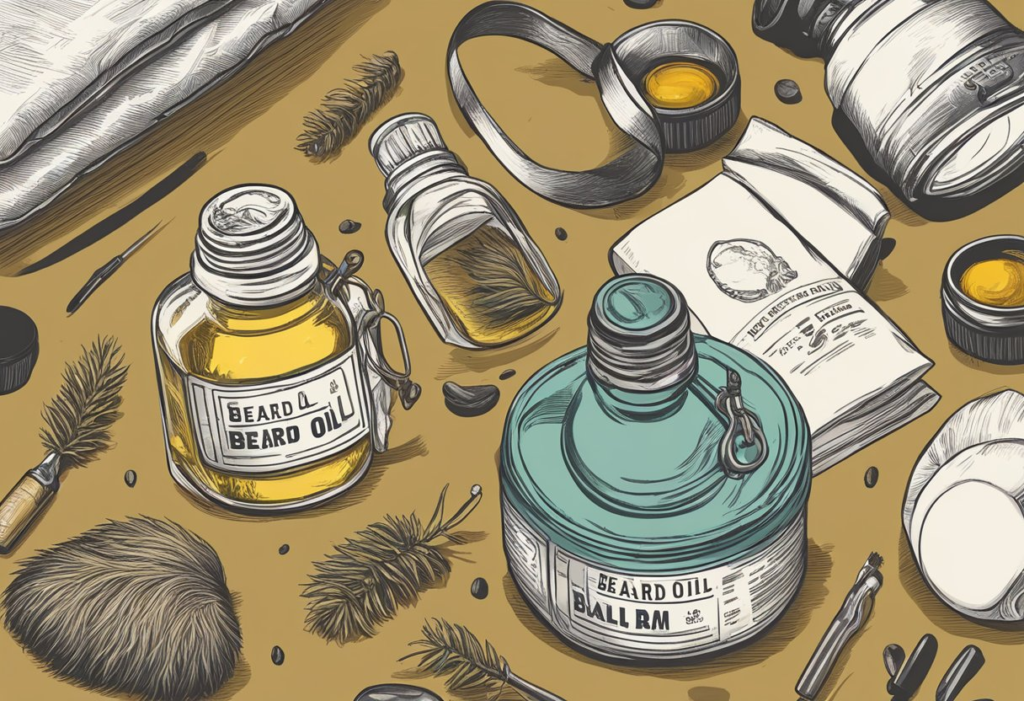
When selecting beard grooming products, understanding ingredients and their benefits is crucial. Reviews and recommendations can guide you toward the best options for your facial hair needs.
Identifying High-Quality Ingredients
I always stress the importance of high-quality ingredients when it comes to beard care. The right ingredients nourish the hair follicles and skin, reducing issues like beard dandruff. Look for products containing natural oils such as jojoba, argan, and coconut oil, which are known to mimic the skin’s natural oils. Biotin is another key ingredient as it helps in strengthening hair. Tea tree oil can be looked for too, especially if you’re aiming to keep your beard free from dandruff while maintaining a clean woodsiness to your scent profile.
Also, expect to encounter components like aloe vera, which can soothe the skin underneath your beard. Always scan labels for harmful additives and opt for products rich in nutrients that promote healthy beard growth.
Product Recommendations and Reviews
Through my reviews, I’ve found that the best beard oils typically offer a blend of moisturizing and nourishing benefits while providing a desirable scent profile. An excellent example is a product that combines natural oils with a hint of sandalwood for a subtle, masculine fragrance.
As for balms, they provide shaping control in addition to hydration. The best beard balms should contain sealants such as beeswax, which are ideal for taming unruly beards. If you’re not sure about the type of product that is right for your beard, consider using a beard brush to distribute the balm evenly, providing both styling and the benefits from the balm’s ingredients.
Before making a decision, read through reviews to understand the pros and cons of each product. Personal experiences often shed light on how the product performs in real-life situations, such as its efficacy in preventing beard dandruff or maintaining a certain type of beard. Keep in mind that what works for one beard may not work for another, as each person’s facial hair and skin type are unique.
Frequently Asked Questions
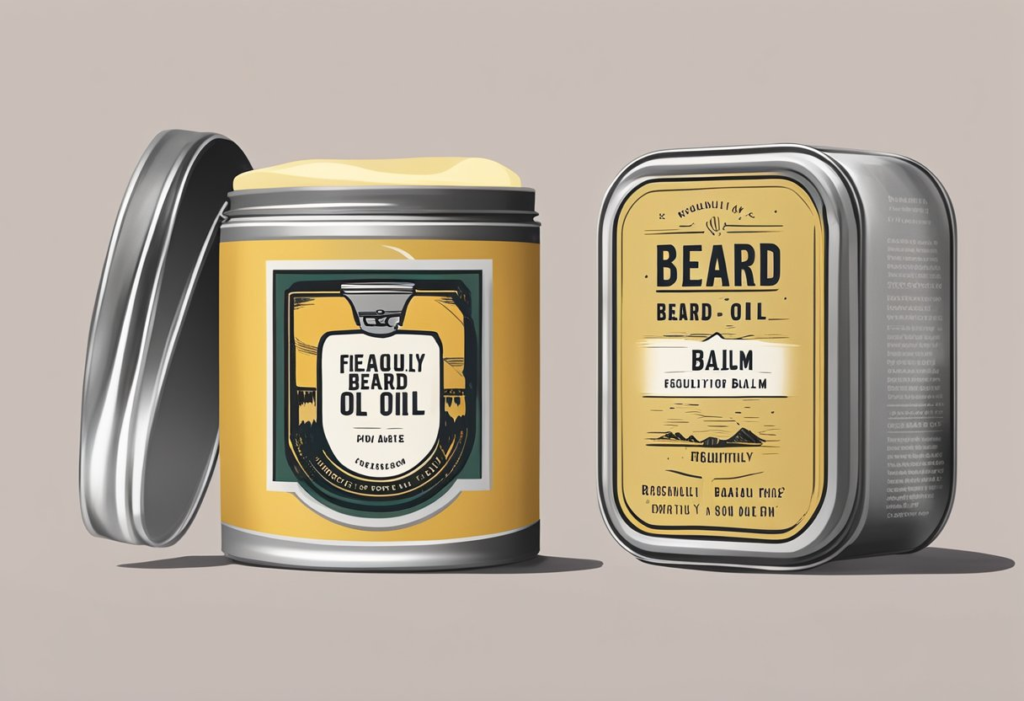
In this section, I’ll clarify some of the common confusions regarding the use of beard oil vs. balm.
What are the key differences between beard oil and balm?
Beard oil is primarily designed to moisturize the skin beneath the beard and the beard hair itself, keeping them hydrated and healthy-looking. Beard balm, on the other hand, offers both conditioning properties similar to oil and added hold for styling thanks to its thicker texture and the inclusion of butters and waxes.
Can beard oil and balm be used at the same time, and if so, how?
Yes, beard oil and balm can be used together. I recommend first applying beard oil to a clean beard to moisturize the skin and hair, then follow up with beard balm to lock in moisture and style as desired.
Is there a preferable choice between beard oil and balm for short beards?
For short beards, beard oil might be more preferable due to its lighter texture which can help in maintaining the health of the skin and the beard without weighing it down. Balm could be used for added shaping and hold if necessary.
How often should beard oil be applied for optimal results?
Beard oil should be applied daily or every other day, depending on your specific skin and hair type. A few drops are enough to keep your beard conditioned and healthy.
What are the benefits of using beard balm compared to beard butter?
Beard balm provides styling hold due to the inclusion of beeswax, making it a better choice for taming and shaping your beard, while beard butter is better for deep conditioning without the hold, as it’s usually crafted with a blend of butters and oils.
What is the recommended way to apply beard balm for best results?
For best results, scoop out a small amount of beard balm, emulsify it between your palms, and apply it thoroughly through your beard, starting from the neck and working upwards, ensuring an even distribution for both conditioning and styling.
